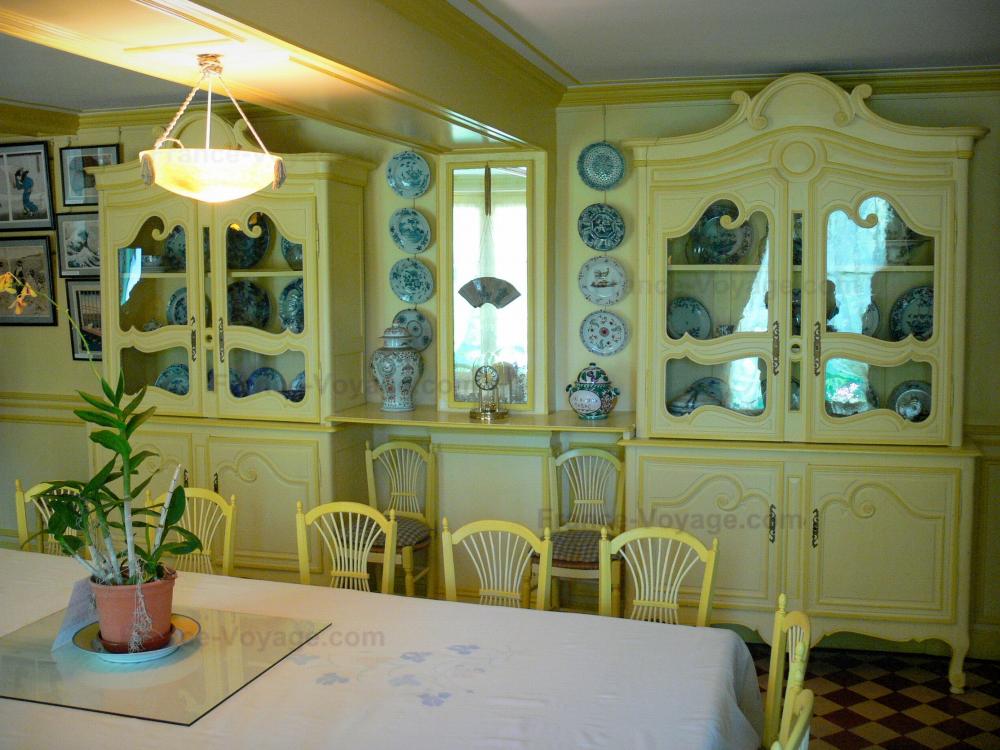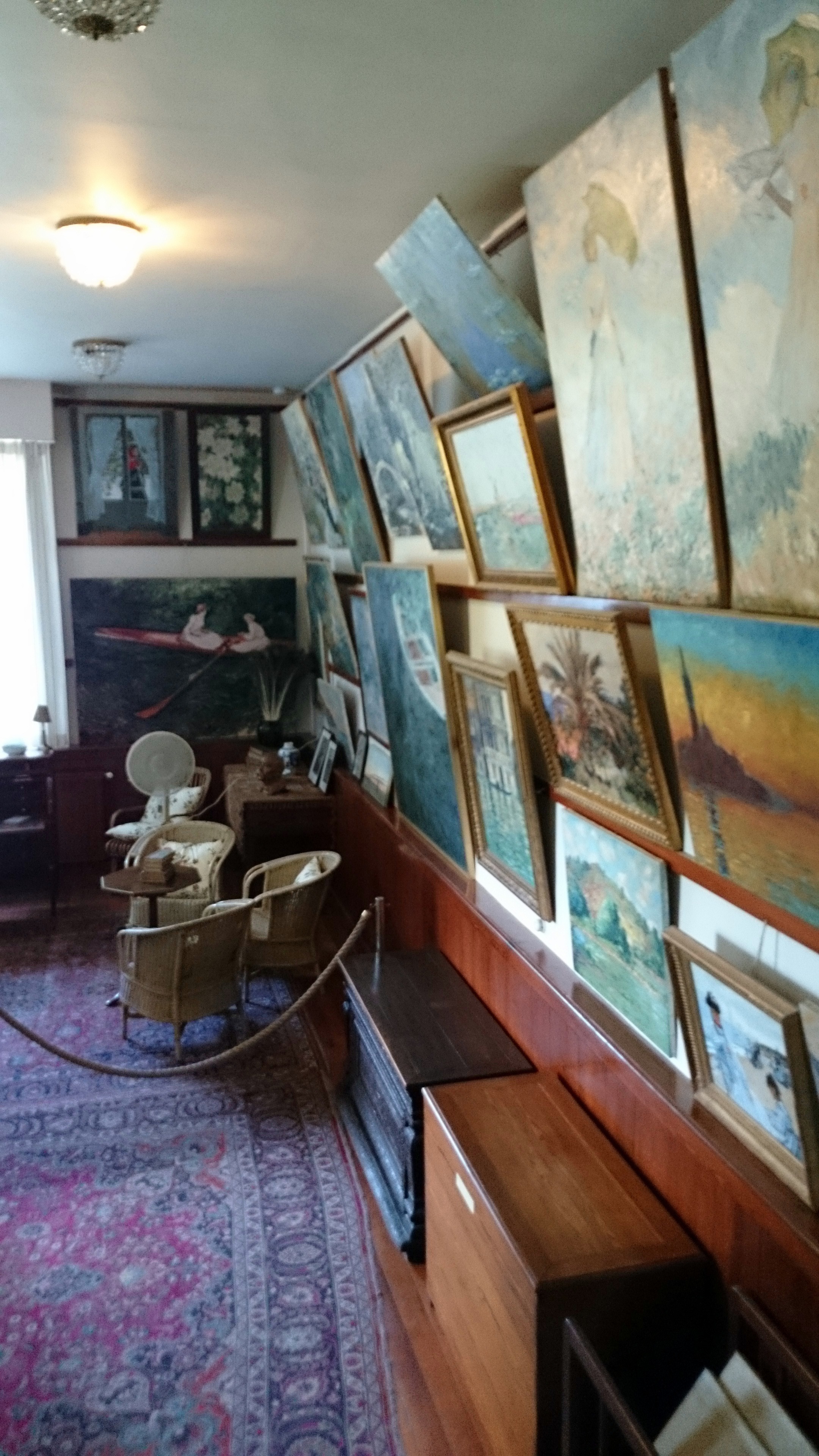Table Of Content

The strength and beauty of nature were impressive in this place, which stands out from the French style. Climbing plants, hanging and drooping flowers like curtains along the path around the pond, roots and trunks make their way through and create a magnificent tableau. By far our favorite ornamental feature was the flower arches arranged along several of the park’s avenues. They give the gardens a bucolic character, like arches opening a path, and an organized, symmetrical, thoughtful layout. But also untidy and spontaneous, letting the flowers climb all around and fall to the sides.
'A shame': City Hall's graffiti cleanup erases popular New Orleans street art
If you’re also visiting the Musée des Impressionnismes in Giverny, a combined ticket for the House and Gardens of Claude Monet is available on site. In this article, you’ll find pictures of our visit experience, as well as practical tips to help you make up your own mind. In Giverny, Claude Monet created a garden which became his favorite motif but also the instrument for a radical evolution of his painting. Much of the 2006 BBC docudrama The Impressionists, which is told from Claude Monet's viewpoint, was filmed at the home, gardens, and pond. Continue your visit in Monet’s washroom and that of Alice, then walk through to her bedroom with its tiny adjoining room intended for sewing.
When do the water lilies bloom at Giverny?
However, Monet's house is home to a collection of more than 200 Japanese ukiyo-e prints from the 18th and 19th centuries. Among the most notable pieces are works by Kitagawa Utamaro (1753–1806), Katsushika Hokusai (1760–1849) and Utagawa Hiroshige (1797–1858). Americans donated almost all of the $7 million needed to restore Monet's home and gardens at Giverny in the 1970s. These donations were part of American diplomacy to France since "France lacked the American tradition of private giving as well as the tax concessions that encourage it."[6] Starting in 1969, under U.S.
Representations of the garden by Claude Monet
All of our full-time gardeners are still here, but it is no longer possible for us to have volunteers or interns, so we have had to adapt. We’re making sure that everyone has his/her own space to work and is protected. The picturesque village of Giverny still draws artists, art lovers and tourists alike, as you can see from its many galleries, teashops, hotels and restaurants. Plants, flowers and trees may not be touched, and there are no lockers for bags and luggage.
Learn more about this artwork
Not a masterpiece perhaps, but the small artwork, rendered on paper in pastel crayons, would surely fetch a fortune in today’s art marketplace. A misty, gray-blue drawing titled “Bord de Mer (Sea Side)” by Impressionist master Claude Monet now lies securely in a foam-lined container in a safe in the FBI’s New Orleans field office. It’s been there since June 2023, when the bureau began investigating who rightfully owns the artwork that apparently was once plundered by the Nazis. For the past four decades, the painting has been in the possession of an American collector who is also consigning works by Camille Pissarro, Childe Hassam and Pablo Picasso during sales next month. Now, it is estimated to sell for between $5 million and $7 million.
He asked for authorisation from the Prefect of Eure to dig a basin on this plot and to feed it by a water intake in one of the Epte’s arms. He thus drew the first contours of the water garden, where he planted colourful water lilies ordered from the Latour-Marliac nurseries. In 1901, thanks to the purchase of a contiguous plot and the derivation of an arm of the Epte, Monet tripled the surface of the pond. Launched by Hugues R. Gall, the restoration of the studio/lounge in Monet’s house was boosted by a very generous donation from the Versailles Foundation. Under the scientific direction of Sylvie Patin, Académie des beaux-arts correspondent and author of many impressionism publications, the layout of the studio/lounge resembles how it would have been in Claude Monet’s time. Those reproductions are now densely hung on the picture rails in the studio/lounge to recreate the room’s former atmosphere, with careful attention paid to historical accuracy.
Water Lilies
During your visit, you’ll have noticed a few family portraits scattered around the house. Did you know that Claude Monet shared his love of photography with his son Michel? In fact, he had a darkroom built in the building that was formerly the 2nd studio and is now the Foundation’s premises. Numerous photographs document the painter’s work, both in his garden and in his studios.

The exterior is painted a cheery pink with emerald green trim (the same hue as the iconic bridge in his Japanese garden). While many rooms in his home are vibrantly pigmented, two of the brightest are the kitchen and the dining room. Monet had become a hugely admired artist by this time, and a ‘colony’ of followers came to visit him in Giverny, changing the face of the village. He made sure that the colors of the house and its interior were matching the colors of his palette. He chose a bright pink for the outside of the house and had the windows, doors, and shutters painted in a bright green.

What’s the best way to get from Paris to Giverny?
Step Into A Claude Monet Painting At This Upcoming 'Impressions of Monet' Immersive Floral Exhibit - GirlStyle Singapore
Step Into A Claude Monet Painting At This Upcoming 'Impressions of Monet' Immersive Floral Exhibit.
Posted: Sun, 04 Feb 2024 08:00:00 GMT [source]
Once you’ve made your way upstairs to the bedrooms, you’ll arrive in the flamboyantly yellow dining room, where you’ll find a host of objects that once belonged to the master of the house. Plate service, antique furniture, vases… Each room deserves your attention, for this house is a veritable art gallery that tells us a great deal about Claude Monet’s life and interests. You’ll see almost a hundred different plant species, including flowers, trees and plants!
The sunny landscape painting features a haystack in a tree-filled field. It was brought to the United States in 1895 by its first owner, the American landscape painter Dwight Blaney. According to Sotheby’s, the painting was immediately lent to the Museum of Fine Arts in Boston, and has remained in the same private collection for decades. Your private guide will give you some background details on Monet and his work before entering the house. In order to keep the numerous visitors moving and to keep the house as quiet as possible, guides can’t give commentary inside. Once out in the gardens, your guide can elaborate on any questions you may have.
The public sale of the artwork may have made the grandchildren of Adalbert and Hilda Parlagi aware that their family’s long-lost treasure had survived the intervening 83 years. Online booking is not mandatory but is recommended on weekends and bank holidays.The purchase of e-tickets is for individual visitors only. They are non-refundable and non-exchangeable.Due to work on the railway lines, we invite you to check the train traffic and schedules from Paris before buying your tickets for the visit. Meules à Giverny is one of several works being sold from the same private collection at the May 15 Sotheby’s sale. The others are Monet’s Bennecourt (1887), Pablo Picasso‘s Courses de taureaux (1901), Camille Pissarro‘s Paysage aux Pâtis, Pontoise, la moisson (1873), and Childe Hassam‘s View of Broadway and Fifth Avenue (1890).
Thanks to generous donations, especially from wealthy American patron Walter Annenberg, the house and gardens were eventually beautifully restored, and have since become a magnet for huge numbers of tourists. On the right, you’ll notice a long house with pink rendering and pretty greens. Bordered by flowerbeds, the artist fell in love with this estate in 1890 and lived here for over 40 years with his blended family. On the outside, take the time to notice the symmetry of the windows and shutters on the 2 floors, as well as the colors in perfect harmony with the surrounding vegetation.
To achieve this, he diverted water from a local river and then arranged flowers, bushes, and trees to create the exact look that he desired. From the same point of view, as he once had, this is a rare and extraordinary experience. In 1893 Monet acquired a vacant piece of land across the road from the Clos-Normand which he then transformed into a water garden by diverting water from the stream Ru, an arm of the Epte river. That garden became famous during his lifetime with his series of monumental paintings of its water lilies, the Nymphéas.
First renting and then buying the house, improving and then expanding the gardens, he made Giverny central to his very existence. He lived here from 1883 until 1926, painting numerous works in the gardens, receiving guests, mentoring artists and making Giverny the hub of a whole art movement. Impressionist artist Claude Monet spent the last 43 years of his life living in a rambling old house on the outskirts of Giverny, a small rural town north of Paris. He worked tirelessly to improve the gardens here, surrounding the house with wisteria and azaleas, a Japanese bridge, water ponds and formal gardens.
From 1977, curator Gerald Van Der Kemp began to restore the house and the garden of Giverny. He managed to mobilise American patrons and to finance three years of considerable work. In 1980 the Fondation Claude Monet was created, and the garden was opened to the public for the first time.


No comments:
Post a Comment